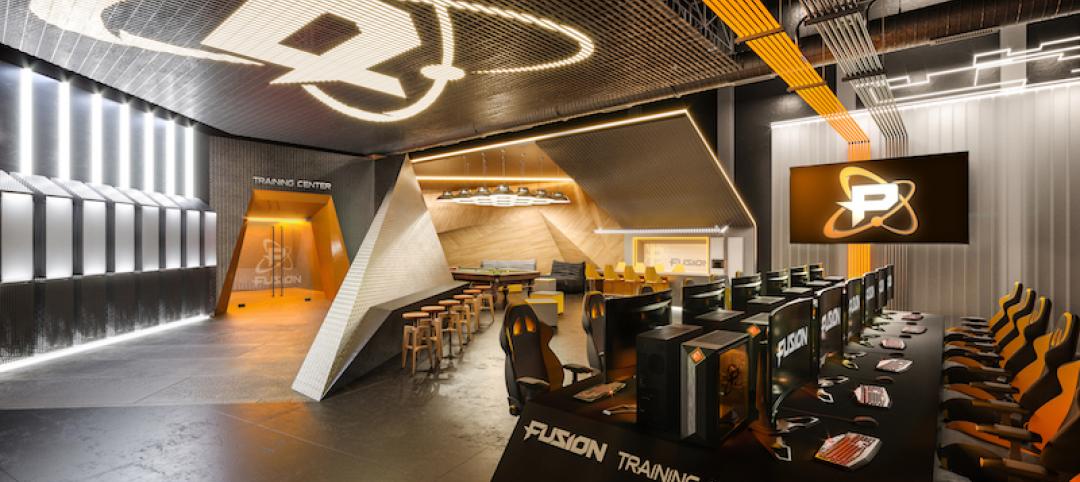This article is part of BD+C's special five-part Technology Report 2014: Top tech tools and trends for AEC professionals.
For more than a decade, the U.S. Department of Energy has made its EnergyPlus energy analysis and thermal load simulation program available for free to Building Teams.
Using EnergyPlus, AEC professionals can model heating, cooling, lighting, ventilation, and other energy flows, as well as water consumption, within a building design.
But without a major rewrite of the program since its creation, using EnergyPlus could exhibit slow performance and occasionally inaccurate analysis results.
The programming language it was originally written in, Fortran, simply could not keep up with advances in the hardware and software computing environment. FORTRAN is a language aimed at scientific programs to be run by scientists for days and weeks on supercomputers, not by building designers running multiple iterations of a design idea in a matter of a few hours.
Because it wasn't well integrated with common architectural design software, EnergyPlus never gained widespread adoption by architects working in the conceptual stage of a project.
At Greenbuild 2013, Autodesk (working pro bono) turned over brand new engine source code to the DOE to create a completely rewritten EnergyPlus for a forthcoming version. The new code will be made available under the DOE’s open source license.
Autodesk’s software engineers translated EnergyPlus—more than 600,000 lines of code—to C++, a modern, object-oriented language that is better supported on mass-market hardware and software platforms.
As a result, a larger ecosystem of developers and vendors will be able to contribute updates to the code in order to improve performance and decrease the time required to run energy model simulations.
The forthcoming version will also work better with BIM applications, auditing tools, and energy dashboards after it is released and developers are able to work on improved integrations.
For more, visit: http://apps1.eere.energy.gov/buildings/energyplus.
Related Stories
Libraries | Jan 23, 2020
Information or community center: The next generation of libraries must be both
Are libraries still relevant in a digital world?
Green | Jan 10, 2020
How the new EC3 tool raises the bar on collective action
Nearly 50 AEC industry organizations partnered to develop the groundbreaking Embodied Carbon in Construction Calculator.
Architects | Jan 9, 2020
AIA selects recipients for the 2020 Regional & Urban Design Awards
The 2020 Regional & Urban Design program recognizes the best in urban design, regional and city planning and community development.
Building Technology | Jan 7, 2020
Tariff whiplash for bifacial solar modules
Bifacial solar systems offer many advantages over traditional systems.
Sponsored | HVAC | Jan 6, 2020
Maximize Energy Efficiency in Class A Office Buildings With Modern Building Systems
Energy-efficient building design starts with the building envelope, but the building systems have a tremendous impact on energy use as well.
Life of an Architect Podcast | Jan 6, 2020
5 most popular Life of an Architect podcast episodes of 2019
Architects Bob Borson, FAIA, and Andrew Hawkins, AIA, LEED AP, produced 25 episodes of the Life of an Architect podcast in 2019. Here are the five most popular episodes of Life of an Architect based on the number of downloads.
Architects | Jan 6, 2020
Merger expands HED’s presence in SoCal
Puchlik Design Associates, its new addition, specializes in healthcare design.
Steel Buildings | Jan 3, 2020
5 reasons to enter the $20,000 Forge Prize
Calling all emerging architects. Don’t miss out on your chance to enter the $20,000 Forge Prize. Submissions for Stage 1 judging are due January 15.
GIANTS 19 PREMIUM | Dec 23, 2019
Top 90 Sports Facilities Architecture Firms for 2019
Populous, HKS, HOK, Gensler, and HNTB top the rankings of the nation's largest sports facilities sector architecture and architecture engineering (AE) firms, as reported in Building Design+Construction's 2019 Giants 300 Report.
| Dec 18, 2019
Reconsidering construction robotics
After decades when experts predicted that robots would become more prevalent on construction sites, it would appear that the industry has finally reached that point where necessity, aspiration, and investment are colliding.
















